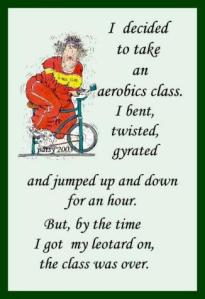Dear Gentle Reader,
With the strains of Vivaldi’s 4 Seasons setting the tone, spring has finally come to Seattle. While so many of you are enjoying unseasonably warm weather, we have seen snow flurries, much rain and the thermometer has not climbed into the upper 50’s. Until the last couple of days. The parking lots at the nurseries were full this weekend. I came home with 11 bags of top soil and 6 roses. Getting these in the ground usually means an aching body. My friend, after a day of digging, complained that she couldn’t bend down to tie her shoes. What’s a person to do who nurses osteoarthritis and spinal stenosis?
Here are some suggestions:
On your hands and knees. Perhaps you, like me, are most comfortable crawling around on your hands and knees. My friend, catching sight of my knee pads hanging from the wall, asked what sort of art object that was. 
 Those are my knee pads. I have them hung right by the back door so I grab them when I head outside to do a gardening chore, however small or brief. If they are hidden away in some garden shed, you won’t put them on. You’ll be in the garden and you’ll bend over to pull a weed and there goes the back.
Those are my knee pads. I have them hung right by the back door so I grab them when I head outside to do a gardening chore, however small or brief. If they are hidden away in some garden shed, you won’t put them on. You’ll be in the garden and you’ll bend over to pull a weed and there goes the back.
A garden stool I love my garden stool made of sturdy plastic. Upright I can sit on it to work in the barrels and containers, harvest pool beans and fava beans.  Inverted, I can kneel on it and use the legs as handles to lift me up.
Inverted, I can kneel on it and use the legs as handles to lift me up.
Stretching i didn’t mention this first because I stretch everyday first thing in the morning, first on the Back2Life machine and then a few Feldenkrais hip opener moves followed by yoga down dog, runner’s lunge and plank. Then while the oatmeal cooks, the seated routine with Jennifer Kreis. I blogged about Jennifer’s seating wake up exercises last Feb. 12, Yoga and Arthritis. I just checked her website: The DVD I love so much is now part of a set of 4 and they are currently discounted to $29.95.
Time limit Don’t over do it. The minute I sense a strain, I stop. Manana es otro dia. Tomorrow is another day.
I found this delightful forum on gardening which I’d like to share with you. Enjoy the comments of these women as they share how they keep their bodies moving. http://forums.gardenweb.com/forums/load/accessible/msg091943101715.html Together we will achieve more, and more comfortably.
Thanks for reading, and please send your suggestions so we can learn from your techniques.
Be well, Do Well and Keep Moving,
Betsy
Betsy Bell’s Health4U
206 933 1889
I enthusiastically forster a person’s business development in the health and wellness field.







